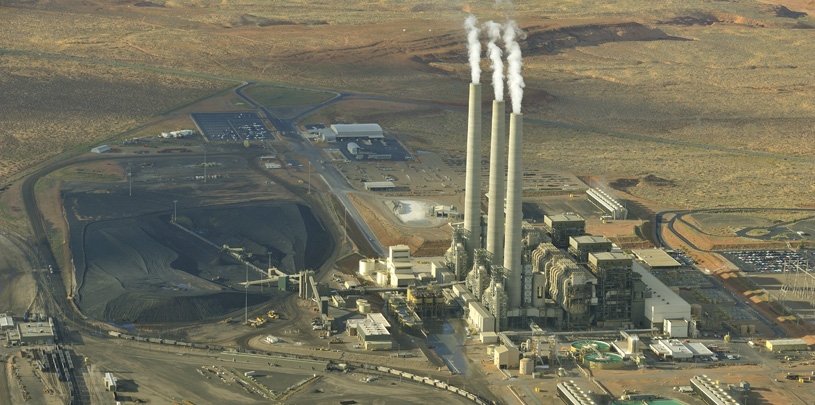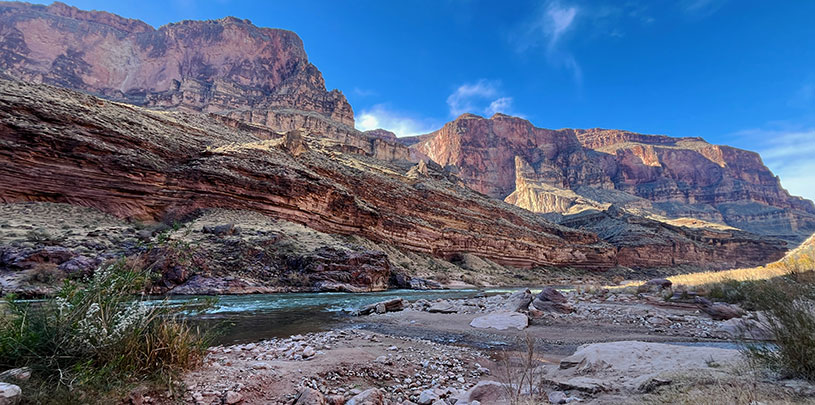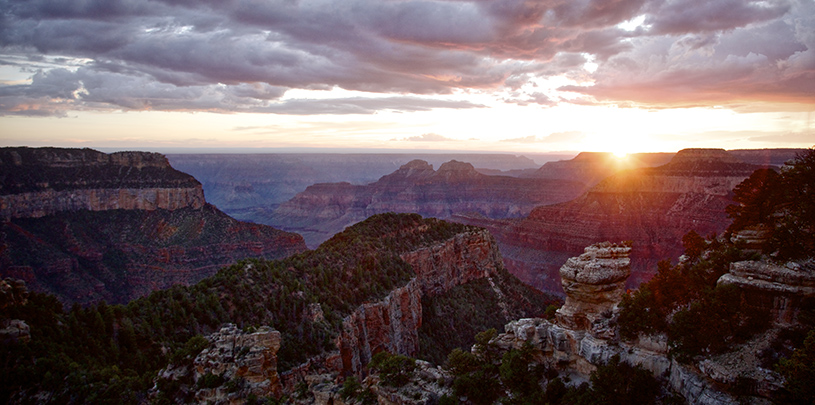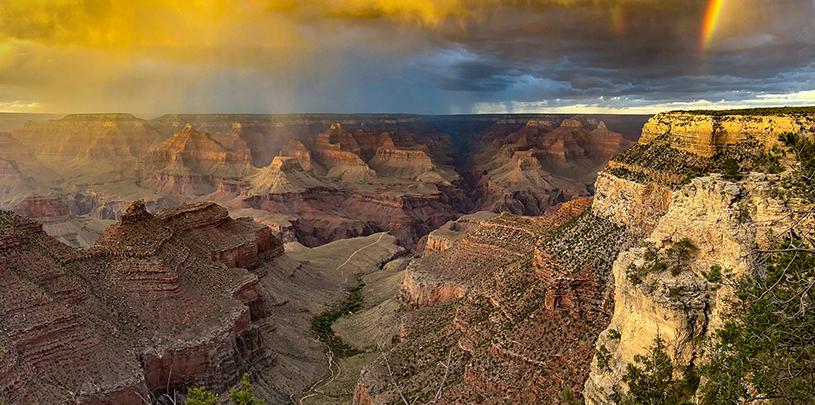
Navajo Generating Station (NGS) in Page, Arizona may be the first big coal-fired power plant to close during the new Trump administration, bringing multiple political forces to bear on one of the largest carbon emitters in the country. The plant’s owners will soon decide when to decommission it.
This Congress and administration may attack rules that protect our environment, but nothing they do can bring the aging power plant back to life in today’s competitive market. NGS owners have already upped their returns by shifting to natural gas and zero-fuel-cost sources such as solar. Some have joined new energy markets that provide more efficient ways to maintain the electrical grid. These changes mean that there is no longer a need to run the West’s largest coal plant full-bore for 24 hours a day in order to provide “baseload power” (the amount of power necessary to satisfy the base level of demand on the electrical grid at any given time).
Federal regulations are not driving NGS owners’ decision to decommission NGS. Even if Congress gutted the Clean Air Act tomorrow, the costs to mine and transport coal and to maintain a massive water-boiling steam plant in a high desert make it simply less profitable than shifting to less expensive sources of energy.
NGS is uneconomical
The plant spends about $38 to produce one megawatt-hour of power, but due to low natural gas prices, the spot price of power in the regional market was just $32 per megawatt-hour in 2015 and that fell to about $25 per megawatt-hour in 2016. The National Renewable Energy Laboratory forecasts that the price of gas-generated power and renewable energy will be lower than coal for the years ahead, if not permanently.
NGS owners selling off shares
Navajo Generating Station’s unacceptable carbon footprint, combined with plummeting prices for solar and wind, caused the Los Angeles Department of Water and Power to sell its share of NGS to the Salt River Project in 2016. For several years, Nevada Power has been angling to sell its share in the plant before it becomes a liability.
The Salt River Project, which owns nearly 50 percent of the plant, began deferring routine maintenance in 2016, laid off much of its hourly workforce, and reduced its annual output to 60 percent of its 2,225 megawatt capacity. For decades, NGS has sustained operations at over 90 percent capacity, including downtime for maintenance and major overhauls.
Other owners have the same flagging level of interest in sustaining this and other coal plants. Arizona Public Service Company has reduced operations at its Four Corners and Cholla plants, which it plans to retire by 2024. Tucson Electric Power’s state-of-the-art Springerville plant is also finding it difficult to compete in today’s market.
Decommissioning Timetable?
NGS owners may decide to stop generating electricity this year in order to decommission the plant by the end of 2019, when their lease with the Navajo Nation expires. Navajo President Russell Begaye said in his opening remarks to the winter session of the Navajo Nation Council that discussions with the Salt River Project about extending the old lease are underway. An extension would allow more time for the Hopi Tribe and Navajo Nation to develop replacement sources of revenue.
The U.S. Bureau of Reclamation, the plant’s federal shareholder, had been working on an extensive environmental impact statement to renew federal leases to keep the plant running until 2044. But news of NGS owners’ pending decision to decommission the plant has put the lease renewal process on hold.
Big economic hit for Navajo and Hopi
Reclamation has several complex obligations. NGS supplies electricity to major Southwest cities and provides power to run Central Arizona Project pumps.
That water supplies Phoenix and Tucson and also helps satisfy water rights settlements with southern Arizona Indian communities. NGS and the coal mines on Black Mesa that feed it provide well-paid jobs for mostly Navajo communities. The Hopi Tribe underwrites 80 percent of its annual operating budget with coal royalties, while the Navajo Nation receives more than $20 million per year from leases and royalties. All of these benefits will be lost when NGS closes.
An opportunity to transition to renewables
For more than a decade, the Grand Canyon Trust has advocated to federal agencies that their ownership stake in the project, coupled with the shoddy history of negotiations with the tribes, creates an obligation to help ease the transition for the Navajo and Hopi when NGS shuts down. We have suggested that they use federal grants, low-interest loans, and power purchase agreements to help the two nations secure an equity stake in replacement capacity to generate electricity using renewables like solar or wind.
In 2013, the Department of the Interior, Department of Energy, and the Environmental Protection Agency acknowledged the weight of our argument and formed a cooperative agreement to examine possibilities. The resulting National Renewable Energy Laboratory report that found NGS-generated electricity to be uncompetitive will be followed by an accelerated push to develop specific renewable energy projects in cooperation with Hopi and Navajo communities. It remains to be seen whether this ongoing federal effort will evaporate as the new administration attempts to follow through on its promise to bring back coal.
In the meantime, the economic reality — cheap natural gas makes the power that NGS produces uncompetitive on the open market — may cause the owners to pull the plug sooner than expected. Regardless of timing, serious attention and planning must be devoted to finding more affordable options for sustaining local economies, while ensuring that the plant and mines are properly cleaned up.





